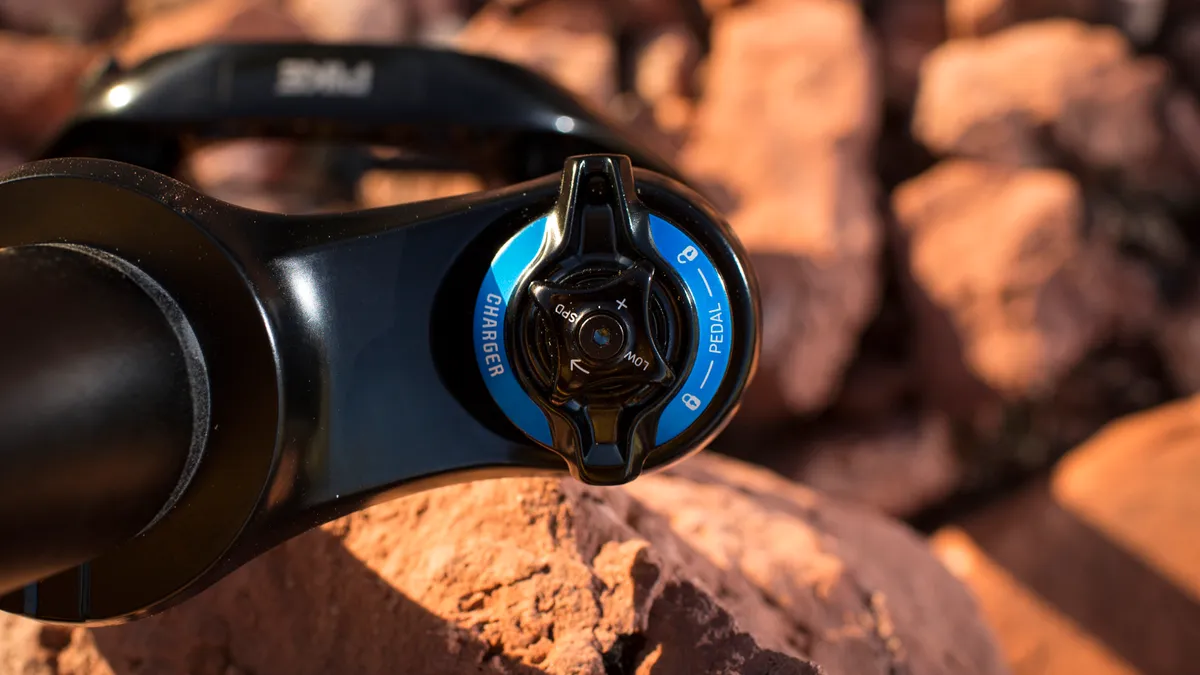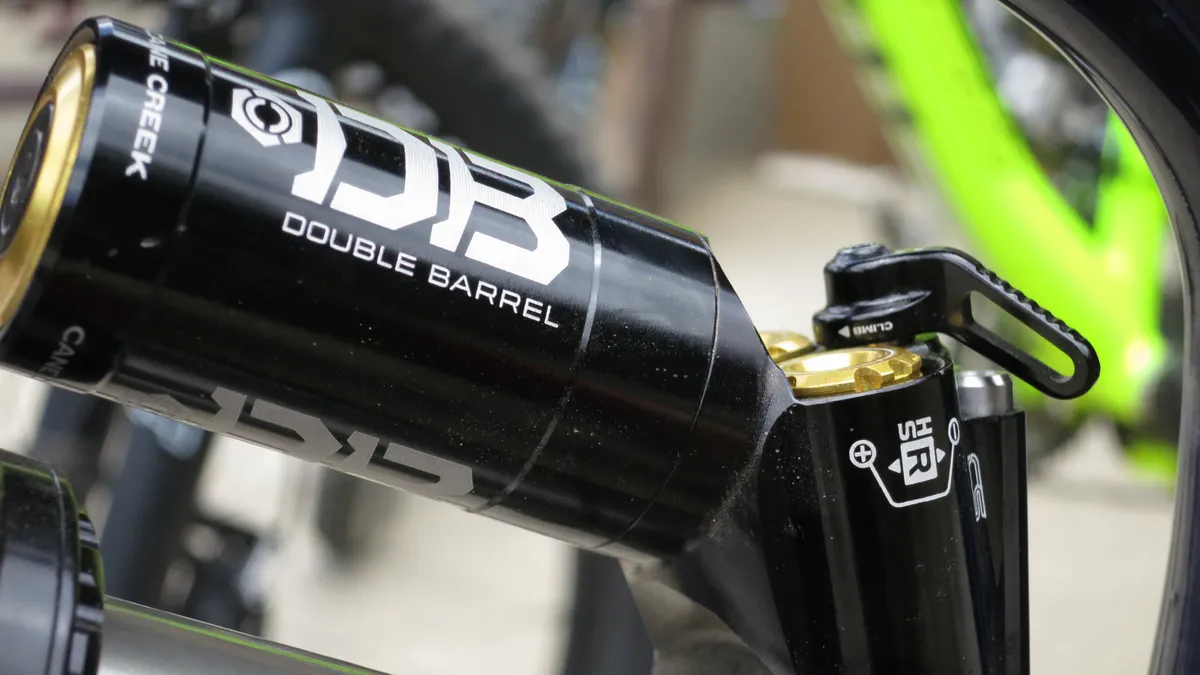Most Trail Tech columns dish out practical advice that will hopefully improve your next mountain bike ride. We’re going to veer off the course this week for a long overdue rant about the lack of attention paid by suspension fork manufacturers to how trail forks handle the less-enjoyable part of the ride: the climb to the top of the trail.
Last week, Cane Creek unveiled a new member of the Double-Barrel Air family, the DBinline. It got me thinking about the first time I rode Cane Creek’s DBair CS shock.
Cane Creek's Climb Switch is a little lever that can make a big difference in the quality of your ride. When toggled on, it restricts the flow of oil through the a pair of rebound and compression circuits to slow the shock's compression and return speed to better match the slower speeds encountered while riding uphill. There's no getting bucked off the saddle while cranking onto obstacles and no wallowing into the travel as the rear wheel rolls off them.
A lightbulb went off in my head during my first ride. “Why hasn’t anyone done this before?” was my first thought. “Why don’t suspension forks have this as well?” was my next.
In my opinion, the Climb Switch is such an unheralded technological innovation that most riders don’t grasp its import. After all, the suspension innovations that garner the most attention are focused on improving downhill performance, where forks and shocks are pushed to their absolute limits and where races are won and lost, at least when it comes to enduro and downhill.
For cross-country racing, a rock-solid lockout that allows the rider to stand up and sprint themselves into anaerobic oblivion makes sense. But for suspension forks with more than 120mm — and for the those of us who aren't racing every weekend — it’s a feature in search of a benefit.
RockShox, Fox Racing Shox and everyone else: you’re doing it wrong. Take a page from Cane Creek’s playbook and develop your own Climb Switch technology for your trail forks.
This might not apply to you if you pedal up smooth fire roads to earn your turns. If, however, the trails you ride are steep and ledgy, or if you have to ascend through a twisting latticework of roots, you would probably appreciate the benefits of a suspension fork that can, with the flip of a lever, simultaneously firm up and slow down.
Setting up mid-travel (120-160mm) suspension forks is a game of compromise. You try to hone in on a middle ground that will give the best overall performance for climbing and descending, albeit at the expense of ideal performance at both ends of the spectrum. If the fork rebounds too fast while climbing, the fork will ricochet off obstacles and you’ll be left to hike your bike. If the fork rebounds too slow when descending, you will start to “stack up.” The fork will get lower and lower, as it does not have time to return to extension between successive impacts. No bueño.
If most riders had their way, they would set up suspension forks with a bit less rebound damping (faster rebound) for descending and add a couple clicks of rebound damping (more turtle in RockShox parlance) for the climbs. Unless you’re willing to tinker around with the rebound knob on the bottom of your fork leg each time the trail changes orientation, you’ll likely find a setting that you can live with. It’s good, but it could be great.
That’s where a true climb switch on suspension forks would come in handy. It would allow the rider to tune their suspension for optimal downhill performance, while providing a mode to switch to when the trail trends upward.
A “climb mode” is not just about locking out the fork; it’s about adjusting the suspension performance to match the requirements of climbing. Climbing speeds are lower than descending, so impacts from riding over rocks and roots come much slower, so the fork needs to respond in kind with a slower rebound stroke. The fork doesn’t need to be locked out, but it does need to firm up to allow the rider to crank up the hills.
We’re just a little lever away from a true “all-mountain” suspension fork. So, fork makers, bring a suspension fork with a real climbing mode to market and take my money.


